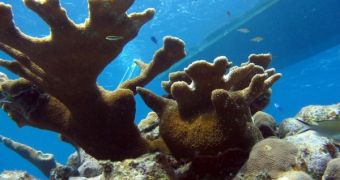Tough no obvious scientific connection was found between electricity going through steel structures and coral reef growth, the Florida city of Lauderdale-by-the-Sea has already invested over $60,000 in contracts with two companies that claim they can help save endangered reefs of the town's beaches. Six hangar-shaped structures are to be built close to the beach lines, each with a length of about 6 feet (2 meters). The municipality hopes to help the dying reef develop and regenerate. While the plan has not yet been approved by the Florida Department of Environmental Protection and the Army Corps of Engineers, the two companies involved in the project, Global Coral Reef Alliance and Biorock, say that they had previous successes in rescuing reefs in other parts of the world, including Mexico, Thailand, Panama and Indonesia. In those cases, they used the same type of special steel structures, powered by a low-intensity electrical current provided by two buoys that collected sunlight from the surface. Apparently, reefs benefit from a reduced electrical energy flow through the structures they inhabit.
John McManus, director of the National Center for Coral Reef Research at the University of Miami, told The Sun Sentinel that, while electrical current indeed stimulates growth at first, the effects it will have on a fully developed reef are still unknown. However, the scientist does not believe that constant flow of electricity could damage the corals, provided that it helped them grow in the first place. If anything, the steel structures, that reportedly have the same strength as concrete, provide an excellent support for reefs to expand off murky ocean floors, affected by pollution and other human generated activities.
Lauderdale-by-the-Sea people behind this investment hope that regenerating the reef will bring an extra plus during the tourist season, with activities such as scuba-diving and sight-seeing being directly associated with the presence of corals. No matter the motivation behind their actions, environmentalists decided to make the town into an example for other urban centers near dying reefs. If this project proves successful, it may be a very solid first step toward a more spread approach on endangered coral reefs across the U.S. and, hopefully, worldwide.

 14 DAY TRIAL //
14 DAY TRIAL //